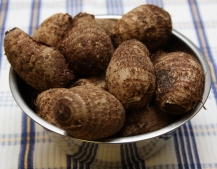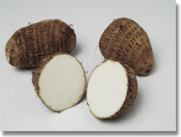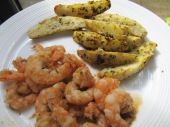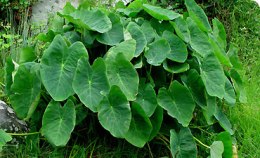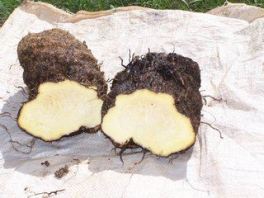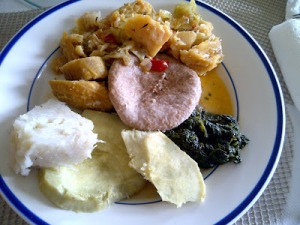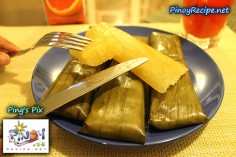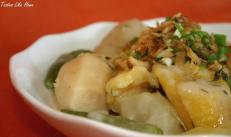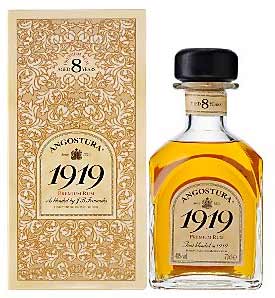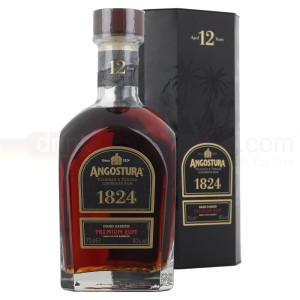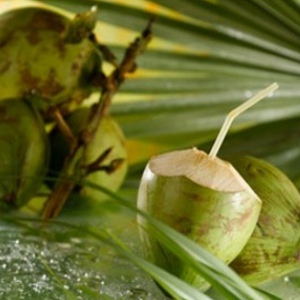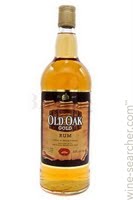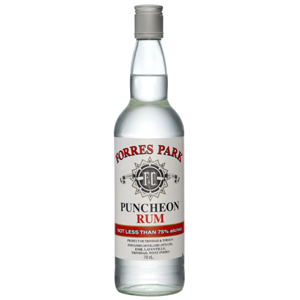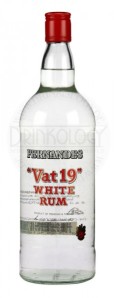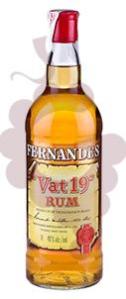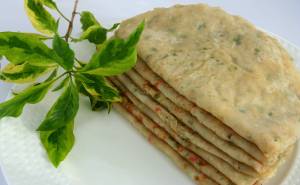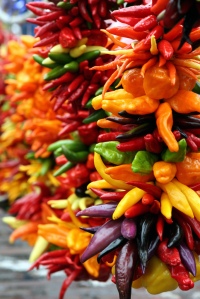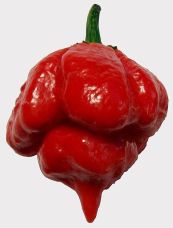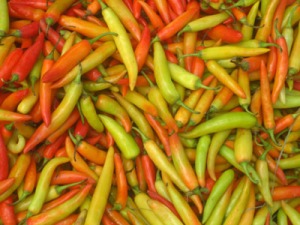Eddoes, Dasheen and Yams
Eddoe or Eddo is a tropical vegetable, a variety of Colocasia esculenta, closely related to taro (dasheen), that is primarily used for its thickened stems (corms).[1][2] It has smaller corms than taro, and in all but the best cultivars there is an acrid taste that requires careful cooking.[1] The young leaves can also be cooked and eaten, but (unlike taro) they have a somewhat acrid taste.[1]
Eddoes appear to have been developed as a crop in China and Japan and introduced from there to the West Indies where they are sometimes called “Chinese eddoes”.[1] They grow best in rich loam soil with good drainage, but they can be grown in poorer soil, in drier climates, and in cooler temperatures than Taro.[1]
Eddoes are also called malangas in Spanish-speaking areas, but that name is also used for other plants of the Araceae family, including tannia (Xanthosoma spp.).[1] Eddoe is known as arvi or arbi in Urdu and Hindi and kochur mukhi in Bangla languages in South Asia. And chembb or Chembu in Malayalam.
Eddoes make part of the generic classification cará or inhame of the Portuguese language that, aside taro, also includes root vegetables of the genera Alocasia and Dioscorea. They are the most commonly eaten inhames/carás in the states of São Paulo, Rio de Janeiro and Espírito Santo, as well as surrounding regions of all.[3] They are also fairly common in Northeastern Brazil, where they might be called batata (literally “potato”), but less so than true yams of the genus Colocasia. According to Brazilian folk knowledge, the eddoes most appropriate to be cooked are those that are more deeply pink, or at least pinkish lavender, in the area where the leaves were cut. (Wiki)
Eddoes is one of my favourite ground provisions. Nutty and wild in flavour it is ideal served with a variety of accompaniments.
Dasheen
Taro /ˈtɑroʊ/ is a common name for the corms and tubers of several plants in the Araceae family. Of these, Colocasia esculenta is the most widely cultivated and the subject of this article. More specifically, this article describes the “dasheen” form of taro; another variety of taro is known as eddoe.
Taro is native to Southern India and Southeast Asia.[2] It is a perennial, tropical plant primarily grown as a root vegetable for its edible starchy corm, and as a leaf vegetable. It is a food staple in African, Oceanic and South Indian cultures and is believed to have been one of the earliest cultivated plants.[3] Colocasia is thought to have originated in the Indo-Malayan region, perhaps in eastern India and Bangladesh, and spread eastward into Southeast Asia, eastern Asia, and the Pacific islands; westward to Egypt and the eastern Mediterranean; and then southward and westward from there into East Africa and West Africa, whence it spread to the Caribbean and Americas. It is known by many local names and often referred to as “elephant ears” when grown as an ornamental plant. (Wiki)
Above you can see a photo of what the dasheen plant looks like above ground and the tubers themselves. In this clip Chris from CarribeanPot shows us how to cook dasheen or taro.
Here is a typical dish of ground provisions, salted cod, plantain, dasheen bush spinackh and a johnny bake. Dasheen bush spinach are the leaves of the dasheen plant that grows above ground. It is used to make callaloo and can be fried with onions and peppers just as you would spinach to make a delicious accompaniment.
Here Chris shows you how to cook dasheen bush bhaji (Indian word for spinach)
Yams
Yams are widely used by many communities, African, Caribbean and soul-food cooking of the South in America. Here is a link to a variety of recipes that use yams to suit a variety of tastes. Be adventurous try our ground provisions. They make excellent meals and are a great carbohydrate supplement.
http://allrecipes.com/recipes/fruits-and-vegetables/vegetables/yams/
Enjoy these recipes from allrecipes…
